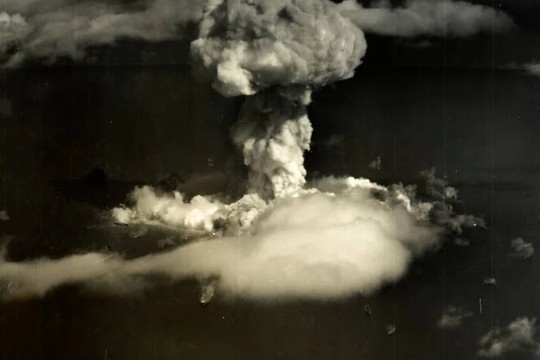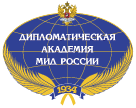Mushroom cloud during a nuclear weapons test on Bikini Atoll.
Photo: Alamy Stock
The vision of nuclear strategy as a means to prevent war remains a powerful but contested idea in international politics. As global rivalries intensify and nuclear arsenals expand, the risk of conflict seems more pronounced than ever, notes Dr. Kristin Ven Bruusgaard, the Director of the Norwegian Intelligence School.
‘Thus far, the key objective of military strategy has been to win wars. From now on, the key objective of military strategy must be to avert wars. There can be no other objective.’ So wrote Bernard Brodie, one of the key strategists of the early nuclear age, whose writings still inspire and shape debates about how nuclear weapons affect international politics. The formulation epitomises what other scholars would later call ‘the nuclear revolution’: the transformational effect nuclear weapons would have on international statecraft, making war less, not more, likely.
The theory posited that the catastrophic effect of nuclear wars would be apparent to all, meaning many states would seek nuclear weapons and the ability to use them to respond to aggression. Having achieved such a secure second-strike capability, however, such states would fall back and relax their inherent impulse for competition and expansion, leaving the world a more peaceful place.
This theory always remained just that: a mere belief that could not explain the way states with nuclear weapons behaved after they acquired them.
Almost 70 years after their ascendancy, the risk of the use of nuclear weapons in conflict seems larger than ever. Although the Russian invasion of Ukraine reignited such scenarios in the popular imagination, resurgent great power rivalry over the last decade has steadily elevated the risk of nuclear war. In Asia, the Taiwan scenario looms large, with questions on both sides regarding their adversary’s nuclear intentions. In Europe, any direct confrontation between Russia and NATO or the United States could rapidly turn nuclear, as per Russian promises of nuclear first-use in any large-scale conflict. Scenarios for great power nuclear escalation look perilous in northern Europe, home region of Russia’s secure second-strike force. Are nuclear weapons not the ultimate bringers of peace, reducing the potential for great power confrontation? Does the nature of contemporary great power rivalry undermine the apparent deterrent, and thus peaceful, effects of nuclear weapons?
The United States, other Western nuclear-armed states and NATO as a collective are drawing nuclear lessons from the conflict in Ukraine. To them, this war demonstrates once and for all the nuclear addiction of an adversary like Russia. It has demonstrated how any potential conflict would have a substantial nuclear component, on or before the first day of fighting. Nuclear weapons would constantly and consistently affect the course of such a war. The likelihood of nuclear use on European territory would increase dramatically. Although security circles have been primed to this reality for some time, the war has brought home this reality to Western policymakers in a distinct way.
A new security policy landscape is being shaped in Europe, with the ongoing war in Ukraine, NATO measures to enhance deterrence and defence, and an ongoing expansion of NATO in the north. This new pattern is likely to have implications for the future.
It will take a lot to convince European states, at some point in the future, that Russia is not a force or threat to be reckoned with. It will take a lot to convince a future Russia, even with different leaders, that the type of force NATO is now generating across Europe and in its border regions harbours no aggressive intentions towards Russia. We are watching a new iron curtain descend on Europe. The question is whether we are paying sufficient attention as to how it can be changed to something more constructive.
The greater relevance of nuclear weapons to both Russia and to NATO is likely to have direct implications for its northern corner. This is already the case: Scandinavians live very close to a key area of Russian strategic retaliatory capability on the Kola Peninsula. In Norway and NATO, people have long been used to the strategic dilemma and confrontation this poses in the Barents and Norwegian Seas, as well as to Atlantic sea-lines of communication. In case of war between Russia and NATO, their interests will clash directly in Europe’s northernmost corner, regardless of where the war starts.
An expanded NATO will change the strategic landscape in a part of a traditionally low-tension part of Europe. It will likely be a question of time before this will affect Russian calculations and force dispositions. If no conventional forces are available, nuclear forces are the backup that the Russians resort to, also for signalling purposes. The peacetime situation is likely to become more tense in the years to come. A crisis or war will have a substantive nuclear component right on Europe’s doorstep, with potential implications for how countries fare in wartime.
Finally, differences in how Russia and NATO respectively think about the integration of nuclear and conventional forces will impact force dispositions in our region. As we have seen in the Asian-Pacific theatre, countries increasingly covet conventional counterforce or counterstrike capabilities. NATO may covet Russia’s nuclear capabilities, but NATO’s conventional capabilities are what Russia fears the most. New technologies impact how adversaries perceive their own critical vulnerabilities.
The new iron curtain in a transformed Europe is likely to produce novel dynamics and different hotspots of tension. Northern Europe will not be inoculated from this development; striking the right deterrence balance to minimise the risk of nuclear confrontation will place greater demands on European security and policy leaders – greater than most have experienced in their lifetime. Heavily rests our common responsibility to ensure that future nuclear policies bring peace rather than war.
read more in our Telegram-channel https://t.me/The_International_Affairs

 11:51 04.09.2024 •
11:51 04.09.2024 •























